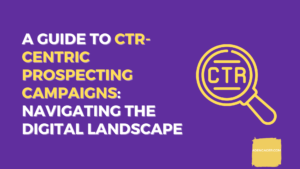Ad Networks vs Exchanges: How Programmatic Advertising Works

Selling and buying digital advertising has fundamentally changed over the past 20 years. In the early days of online marketing, ad networks arose as middlemen to connect advertisers with website publishers who wanted to monetize their content. Ad networks aggregate ad inventory from many sites and packages it up to sell to advertisers seeking target audiences. This model still exists today, but in the mid-2000s, ad exchanges emerged as a more direct method of transaction between publishers and advertisers. Ad exchanges provide a platform for real-time bidding auctions where advertisers bid for the chance to display ads on a specific site for a specific visitor. With ad exchanges, there is greater transparency into the source of inventory and pricing. Both models involve digital ad transactions, but ad networks bundle inventory while ad exchanges connect buyer and seller directly in an efficient marketplace.
History and Evolution
Like lots of new technologies, programmatic advertising has come a long way over the past couple of decades. Back in the 1990s, ad networks started popping up as a way to bring together ad inventory from many different publishers. It was an evolution past selling ads for just one site – publishers could tap into a bigger pool of advertisers by teaming up.
Fast forward to 2003, and Google launched its AdSense program. This was one of the first really large, widespread ad networks. Publishers could place some code on their site, and voila – text and display ads targeted to their content would appear. Advertisers could reach a ton of sites through one channel. AdSense really took off and helped spawn many copycats.
The mid 2000s brought the next big leap – ad exchanges. These operated like financial markets, enabling real-time bidding auctions for ad inventory. Advertisers could bid on an impression and buy ad space ultra efficiently. Exchanges brought speed, automation and advanced targeting capabilities.
Speaking of targeting, DoubleClick was founded way back in 1996 as one of the first ad tech firms focused on targeted display advertising. Google acquired DoubleClick in 2007 for over $3 billion, which gives a sense of how valuable its data and targeting technology was.
Bringing everything full circle, today programmatic advertising and real-time bidding (RTB) rule the digital ad world. Instead of needing to buy ads on specific sites through sales contracts, advertisers can use sophisticated software to find target audiences and optimal placements. It’s efficient and effective. Though it didn’t happen overnight, programmatic has displaced the old network model.
How Ad Networks Work
Ad networks operate by contracting with many different publishers to gain access to ad inventory on their sites. For example, an ad network may have display ad space on thousands of small blog sites in its network. The ad network aggregates all of this ad inventory together into one big pool and makes it available to advertisers.
Advertisers can then buy ad impressions targeted to specific demographics, contexts, geographic locations, or other attributes that match their campaign goals. An ad for a flower delivery service may want to show ads on cooking sites frequented by women ages 25-40. The ad network has the scale and segments to make this possible.
Behind the scenes, the ad network also handles all of the ad serving technology, optimization of ad performance, and reporting metrics back to the advertiser on how their ads are doing. Leading ad networks today include Google Ads, Taboola, Outbrain, and many more. They provide an efficient way for publishers to monetize and advertisers to access large segmented audiences.
Benefits of Ad Networks
For publishers, ad networks offer a guaranteed way to monetize their sites at scale without having to find advertisers and manage ad serving themselves. Networks provide access to large volumes of demand, so publishers are assured their ad inventory will be filled. They provide a steady stream of revenue based on fixed CPM rates, rather than the variable pricing of auctions. This simplifies planning and projections.
Advertisers also benefit from ad networks’ ability to target precise audiences across many sites. A network may provide access to niche categories a single site can’t. And their optimization technologies improve campaign performance. Advertisers also appreciate ad networks handling all the targeting, reporting, and optimization functions – they just have to focus on their goals and creative.
Ad networks create efficiencies for both publishers and advertisers. Publishers can focus on content while easily monetizing at volume. Advertisers access targeted audiences at scale without heavy lifting. It’s a model that provides simplicity and performance.
How Ad Exchanges Work
Ad exchanges provide a platform that enables advertisers to buy ad inventory directly from publishers through real-time auctions. When a user visits a website that’s part of an exchange, an auction is instantly held for the opportunity to show an ad to that user.
Advertisers get to look at data associated with the user, including their location, browsing history, and other attributes. Based on this data, advertisers place automated bids in the auction to try and win the ad impression. Factors like relevance, performance history, and bid price determine the winner.
The highest bidder wins the auction and has their ad displayed to the user. This all happens in milliseconds as the page loads. Ad exchanges tap into advertisers’ demand to create a thriving marketplace for publishers’ ad inventory. Leading examples include Google AdX, AppNexus, and the Rubicon Project, which connect top publishers and brands through billions of daily auctions.
The exchange model provides efficient, optimized monetization for publishers and focused reach for advertisers. Bidding logic and algorithms ensure the best ads match the right users. Exchanges have enabled far greater automation, precision and scale versus manual ad sales.
Benefits of Ad Exchanges
For publishers, exchanges allow them to monetize ad inventory across all devices and formats from one platform. Instead of needing separate ad sales teams for mobile, video, etc., exchanges aggregate demand to maximize revenue.
Advertisers also benefit from only having to pay for the specific impressions and users they want to target. They don’t waste budget on broad placements. The real-time bidding model ensures efficient spending.
Additionally, ad prices are set dynamically based on what advertisers are willing to bid in the moment. Publishers earn higher revenue as advertisers compete for key audiences. There is greater transparency into the value of impressions.
Overall, exchanges bring automated precision that benefits both publishers and advertisers. Publishers access greater demand and revenue channels. Advertisers hone in on valuable audiences without waste. The auction marketplace results in optimal pricing and matching. Exchanges have fundamentally improved efficiency and performance.
Ad Network vs. Ad Exchange

Fees and Technology Costs
When using an ad network or exchange, publishers don’t get to keep 100% of the revenue from ads shown on their site. These technology platforms take a cut for providing their services.
On average, ad networks take around 10-20% of the ad revenue generated through them. So if a publisher earns $1,000 through an ad network, they may keep $800-900 after the network’s fees. The exact rates can vary widely depending on minimums and volume discounts.
Ad exchanges typically charge lower tech fees compared to networks, around 5-15% on average. For example, a publisher earning $1,000 may pay $50-150 to use an exchange. Exchanges promote programmatic ad buying, and competition puts downward pressure on fees.
An emerging alternative to cut costs is header bidding, which publishers can use to get demand from exchanges without giving up an impression share. Header bidding provides publishers more control and can reduce exchange fees. But exchanges argue their superior technology justifies the charges.
Most Used Technologies
- Google Ads, formerly known as Google AdWords, remains one of the largest and most popular ad networks. Its massive reach, advanced targeting, and integration with other Google products like YouTube make it a top choice for many advertisers.
- For ad exchanges, Google’s DoubleClick is dominant after Google acquired the exchange in 2007. DoubleClick powers a huge portion of display ads served across the web.
- Other top ad exchanges used by major publishers include AppNexus, Rubicon Project, and OpenX. Each runs billions of ad auctions daily.
- On the social side, Facebook Ads has grown tremendously based on Facebook’s user data and advanced targeting capabilities. It allows advertisers to buy video, display and mobile ads targeted to specific demographics and interests.
Conclusion
In closing, ad networks and exchanges both facilitate digital advertising transactions, but in different ways. Ad networks offer simplicity and guaranteed volumes for publishers by aggregating advertiser demand, though at the cost of lower revenue. Exchanges provide more transparency through auctions, but require more effort for publishers to manage.
Looking ahead, programmatic trading on exchanges has emerged as the dominant model, replacing traditional ad network relationships. Automated auctions allow advertisers to efficiently target the specific users and placements that best meet their campaign goals. For publishers, exchanges potentially unlock greater revenues as advertisers bid in real-time for impressions.
The ad tech ecosystem continues to rapidly evolve. Yet exchanges appear to be pulling ahead as the next generation programmatic solution offering benefits to both publishers and advertisers compared to traditional networks. But networks retain advantages in terms of simplicity and may still play a key role in display and mobile ad delivery






